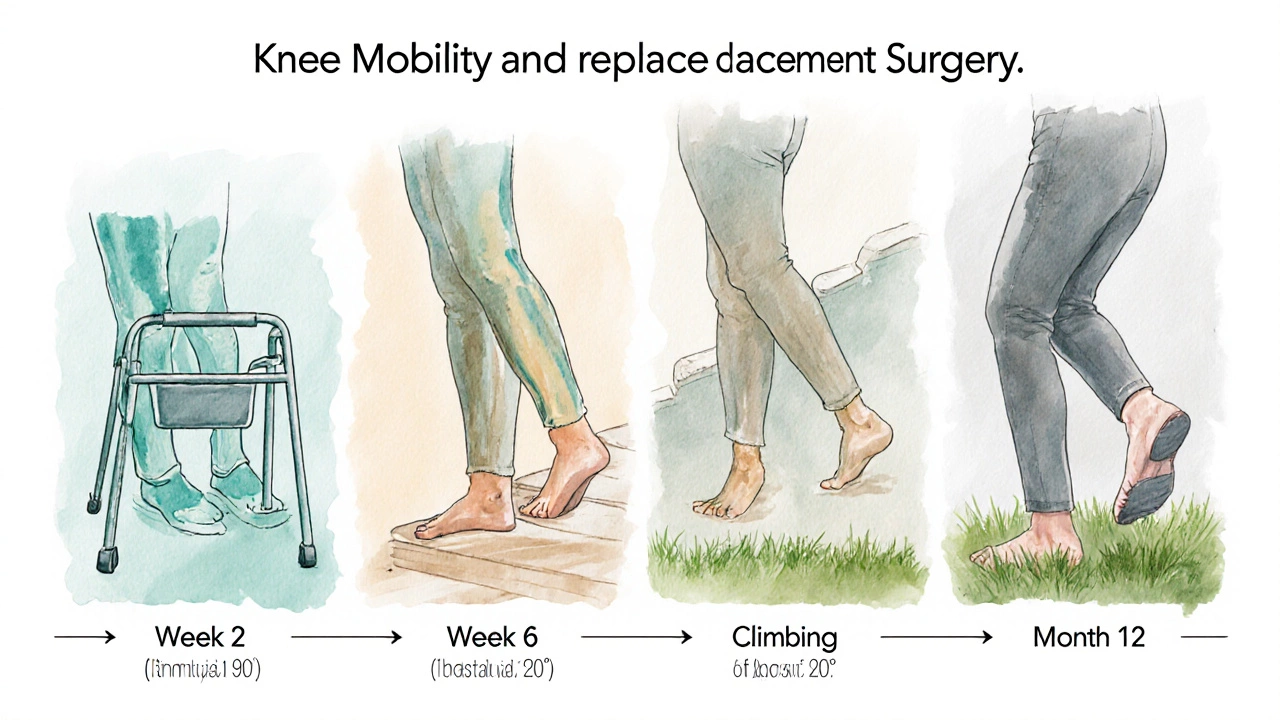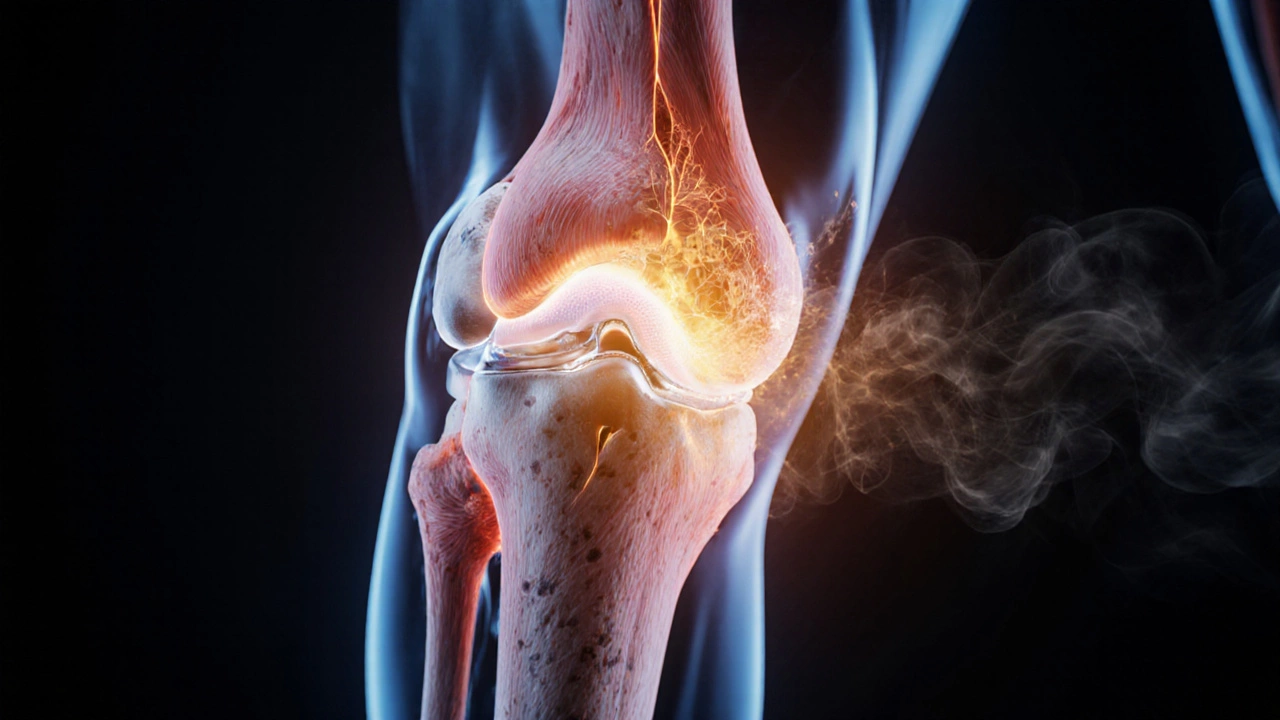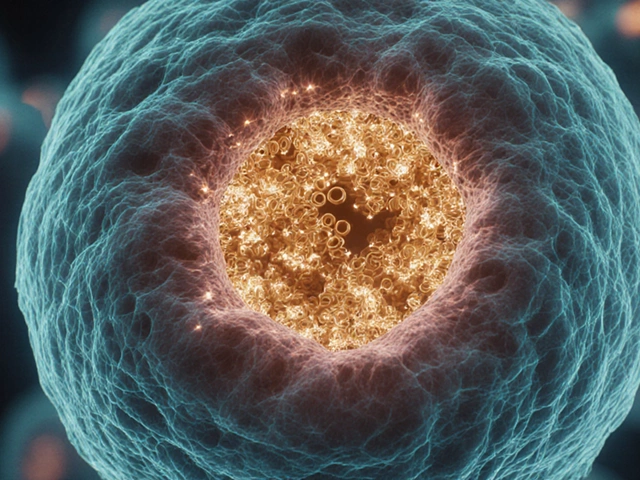Knee Stiffness Recovery Tracker
Your Progress Tracker
Recovery Milestones
Week 1-2: 90° flexion - Swelling peaks, limited movement
Week 3-6: 110-120° flexion - Walking without aids, improved motion
Week 7-12: 125°+ flexion - Major stiffness improvement, easier movement
Month 4-6: Near-full motion - Return to light activities
Month 6-12: Full recovery - Normal daily activities, slight stiffness in cold weather
Your Recovery Assessment
After knee replacement surgery, stiffness is one of the most common concerns. You’re not alone if you’re wondering how long it will take for your knee to feel normal again. Many people expect to walk without pain right away, but stiffness? That lingers longer than most anticipate. The good news? Most people see major improvement within 6 to 12 weeks-but full recovery can take up to a year. It’s not about speed. It’s about consistency.
What Causes Stiffness After Knee Replacement?
Stiffness isn’t just from the surgery itself. It’s a mix of swelling, scar tissue, muscle weakness, and joint capsule tightening. During the operation, the surgeon removes damaged bone and cartilage and replaces them with metal and plastic parts. But the surrounding tissues-ligaments, tendons, and the joint capsule-get stretched, cut, and then heal. That healing process often leads to tightness.
Some people develop fibrosis, where excess scar tissue forms around the joint. Others lose muscle strength in their quadriceps and hamstrings, which makes it harder to bend or straighten the knee. Even small movements like climbing stairs or sitting in a chair can feel stiff if the muscles aren’t firing properly.
It’s not unusual for a knee to feel stiff at 8 weeks, especially if you haven’t been doing your exercises. But that doesn’t mean you’re doing something wrong. It just means you need to keep going.
Recovery Timeline: What to Expect Week by Week
Recovery isn’t a straight line. It’s a series of small wins. Here’s what most patients experience:
- Week 1-2: Swelling and stiffness are at their peak. You’ll likely only bend your knee to 90 degrees. Walking with a walker or crutches is normal. Pain is managed with medication.
- Week 3-6: Swelling starts to drop. Most people can bend their knee to 110-120 degrees. You’ll be walking without aids by now. Physical therapy becomes more intense-stretching, leg lifts, stationary bike.
- Week 7-12: This is where most stiffness improves dramatically. By 12 weeks, over 80% of patients can bend their knee to 125 degrees or more. Walking feels easier. Climbing stairs becomes manageable.
- Month 4-6: Muscle strength returns. You might still feel some tightness after sitting for long periods, but it eases with movement. Many return to light activities like golf or swimming.
- Month 6-12: Full motion and strength usually return by this point. Some people notice a slight stiffness in cold weather or after standing all day-but it’s not painful. This is your new normal.
A 2023 study from the Journal of Bone and Joint Surgery followed 1,200 knee replacement patients. At 6 months, 92% had regained at least 115 degrees of flexion. By 12 months, 97% were at or near their full range. The ones who didn’t improve? They skipped rehab.
What Slows Down Recovery?
Not everyone recovers at the same pace. Some factors can delay progress:
- Skipping physical therapy: The most common mistake. Home exercises alone aren’t enough. A therapist knows how to break up scar tissue and guide safe movement.
- Being too inactive: Sitting all day? That’s a recipe for stiffness. Even short walks every hour help.
- Being too aggressive: Forcing your knee past pain can cause swelling and setbacks. Progress should feel like a stretch, not a tear.
- Obesity: Extra weight puts more pressure on the joint. Losing even 5-10 pounds can make a noticeable difference in mobility.
- Previous knee problems: If you had arthritis for years before surgery, your muscles and ligaments may have adapted to stiffness. Reversing that takes longer.
One patient I worked with, a 68-year-old woman from Pune, waited 14 months before starting rehab because she was afraid of hurting herself. By the time she began, her knee had locked at 85 degrees. It took her 9 more months of daily therapy to get to 110 degrees. She could walk again-but she lost half a year of her life to fear.

How to Speed Up Recovery: 5 Proven Tips
Stiffness doesn’t have to be permanent. Here’s what actually works:
- Start moving the same day: Even if it’s just ankle pumps and glute squeezes in bed, movement prevents blood clots and keeps fluid from pooling. Hospitals push this for a reason.
- Do your PT exercises every single day: Not three times a week. Every day. Even if you’re tired. Consistency beats intensity.
- Use heat before, ice after: Warm a towel in the microwave for 30 seconds and place it on your knee for 10 minutes before exercises. Then ice for 15 minutes after. Heat loosens, ice reduces swelling.
- Try a continuous passive motion (CPM) machine: These machines gently bend your knee while you rest. Studies show they improve early motion by 10-15 degrees compared to no machine.
- Track your progress: Use a ruler or measuring tape to mark how far you can bend your knee each week. Seeing progress-like going from 90 to 105 degrees-keeps you motivated.
When Should You Worry?
Some stiffness is normal. Some isn’t. Call your surgeon if:
- Your knee is red, hot, or leaking fluid after the first week.
- You have a fever over 100.4°F (38°C).
- Your knee locks completely and you can’t straighten or bend it at all.
- Pain gets worse instead of better after 6 weeks.
- You can’t bear weight after 3 weeks.
These could signal infection, implant loosening, or a blood clot. Don’t wait. Get checked.

Can Stiffness Be Permanent?
Yes-but it’s rare. Less than 5% of patients end up with significant stiffness after a year. Most of those cases involve people who didn’t follow rehab, had multiple prior surgeries, or developed severe scar tissue.
Even then, options exist. A surgeon can do a manipulation under anesthesia (MUA), where the knee is gently moved while you’re asleep to break up scar tissue. Or a revision surgery if the implant is misaligned. But these are last resorts.
For most people, stiffness fades. It just takes time. Your body needs months to rebuild strength and relearn movement. Don’t compare yourself to someone who had surgery two weeks ago. Compare yourself to where you were last week.
Realistic Expectations: What ‘Normal’ Looks Like
After a knee replacement, you won’t have the same flexibility as a 20-year-old athlete. But you don’t need it. Most daily activities require only 90-110 degrees of knee bend.
Here’s what you’ll be able to do once stiffness fades:
- Get in and out of a car without help
- Climb stairs without holding the railing
- Sit cross-legged (some people can, others can’t-don’t force it)
- Squat to pick something up from the floor
- Walk for 30 minutes without pain
That’s success. That’s freedom. And it’s within reach.
How long does it take for knee stiffness to go away after replacement?
Most people notice major improvement in stiffness between 6 and 12 weeks after surgery. Full recovery, including muscle strength and complete range of motion, usually takes 6 to 12 months. Consistent physical therapy is the biggest factor in how quickly stiffness fades.
Is it normal to still have stiffness after 3 months?
Yes. While many people feel much better by 3 months, stiffness can linger, especially after sitting for long periods or in cold weather. As long as you’re making gradual progress-like bending your knee a few more degrees each week-you’re on track. If your range hasn’t improved in 4 weeks, talk to your therapist.
Can I speed up recovery if I’m still stiff after 6 weeks?
Absolutely. Add heat before exercise, increase your daily walking, and make sure you’re doing all your prescribed stretches. Don’t skip physical therapy sessions. If you’ve been doing them but still aren’t improving, ask your therapist about manual therapy techniques or a CPM machine. Progress is still possible-even after 6 weeks.
Why is my knee stiffer in the morning?
Fluid builds up overnight when you’re not moving. Your muscles also tighten during sleep. A warm shower or heating pad for 10 minutes before getting out of bed helps. Gentle knee bends while still in bed-like sliding your heel toward your buttocks-can loosen things up before you stand.
Will I ever be able to kneel after knee replacement?
Some people can kneel comfortably after 6-9 months. Others never do, and that’s okay. Kneeling puts direct pressure on the implant, which can cause discomfort. If you want to kneel, wait until your surgeon says it’s safe, and use a padded cushion. Don’t force it.
What Comes Next?
Once stiffness fades, your focus shifts to strength and endurance. You’ll start walking longer distances, maybe even swimming or cycling. Some people return to gardening, dancing, or playing with grandchildren. Others take up yoga or tai chi to improve balance.
But don’t stop moving. The biggest risk after knee replacement isn’t pain-it’s inactivity. Without regular use, your new knee can stiffen again. Treat it like a car: if you don’t drive it, it rusts.
You didn’t get this surgery to sit still. You got it to live again. One step at a time, one stretch at a time, you’re getting there.





